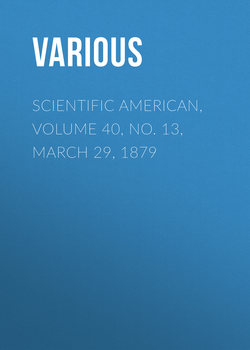Читать книгу Scientific American, Volume 40, No. 13, March 29, 1879 - Various - Страница 9
A NEW ORE CRUSHER
ОглавлениеThe accompanying engravings represent an improved ore crusher, which is said to be very effective and economical in the use of power.
Fig. 1—BROWN'S ORE CRUSHER.
Fig. 2—HORIZONTAL SECTION.
A short vertical cast iron cylinder, A, having in one side a discharge opening, H, contains all of the movable parts.
The upper portion of the cylinder is lined with chilled iron plates, L, and an inclined chute, X, leads to the discharge opening, H.
A rigid shaft, B, carries the circular crusher, C, and moves in a ball and socket joint at the upper end, and extends eccentrically through the boss of a bevel wheel, G, at its lower end, and rests on a step supported by a lever that may be adjusted by the screw, R. The wheel, G, is driven by the pinion, P, on whose shaft there are a pulley and a fly-wheel.
The double gyratory motion of the crusher, C, causes it to approach all portions of the lining, L, crushing whatever lies between.
It is said that this machine is capable of crushing 10 tons of the hardest ore per hour. Its weight is 6,500 lbs.—Musée de l'Industrie.
